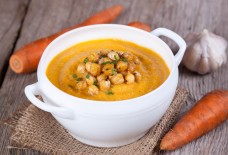Let's Make Every Day National Baklava Day
By: Sophia Segal/Contributing Writer for Arab America
Each year we’re greeted with national days all over the country. For some, it’s just a regular day, but for others, they really look forward to celebrating something that’s fun and enjoyable. And if you can eat at the occasion, then why not celebrate this day?
Don’t worry too much about trying to keep up with all the national days because November 17 may be the only one you’ll want to remember. Why? Because it’s none other than National Baklava, and we hope you take this opportunity to fill your home with this sweet and flaky pastry that’s loved all around the world.
If you don’t know what baklava is, it’s a sweet dessert that gives layers of texture and flavors between sheets of filo pastry filled with chopped nuts and drizzled with syrups or honey.
Baklava
The exact origins of baklava are a little scattered, but many resources have shown that it originates from the Ottoman countries. With its delicious syrups and nuts, it was served to not only royals but also numerous ethnic groups that claim it as theirs. Baklava is an example of human ingenuity in developing food that not only nourishes the body but also brings happiness to the mind and spirit.
It’s commonly regarded as a Greek specialty (both the mainland and islands), but baklava is a dessert that’s available in a wide range of countries. For example, it’s also found in Turkish and many Arab and Middle Eastern cultures. Baklava is generally served on special occasions, many times during religious holidays like Christmas and Easter for Christians, Ramadan for Muslims, and Rosh Hashannah and Purim for Jews.
History
The word baklava comes from the Turks, although the dish is often thought to be of Greek origin. But even with all of this information, it can be very hard to pinpoint the exact origin. Even though it may have originated in one place, it has been adjusted and modified by another culture’s likes and tastes.
One of the oldest known recipes for a sort of proto-baklava is found in a Chinese cookbook that has been dated back to 1330 under the Yuan (Mongol) dynasty. It was named and called Gullac which is also found in Turkish cuisine. This food is layers of phyllo dough that are placed one by one in warmed up milk with sugar. It is served with walnuts and pomegranate, which is usually eaten during Ramadan. In the kitchens of the Topkapi Palace, the Sultan presented trays of baklava to the Janissaries every 15th of Ramadan in a ceremonial procession called the Baklava Alayi.
An ancient recipe from the Greek island of Crete called Gastrin is similar to modern baklava. Sesame seeds, pepper, and poppy seeds are only some of the unusual ingredients in this ancient recipe. Before sugar had arrived in Greece, grapes were used as a sweetener which added a unique taste.
The Greek’s took the recipes of baklava and turned the dough into what it is today. The dough technique is one that allowed it to be rolled as thin as a leaf, rather than the rougher, bread-like texture of the Assyrian dough. The word “Phyllo” comes from the Greek language, meaning leaf.
Phyllo dough was then changed in the late eighteenth century by former pastry chef Marie Antonette, while in exile at the Ottoman Turkish palace. This is when the “dome” technique of cutting and folding baklava squares was created.
Culture
Baklava has generally been regarded in Greece as a dish reserved for special occasions. In some areas, baklava is the most important sweet served at weddings, it can also be served during religious Christian holidays such as Christmas and Easter. It’s made with 40 sheets of phyllo dough representing the 40 days of lent.
In the Arab World, baklava has become traditional for Rosh Hashannah and Purim, but is enjoyed at other celebrations throughout the year.
Baklava is one of the most famous Greek desserts, while it sweeps across Greece and has many families sharing their own version. There have been many variations of the recipe where some might change the type of nuts you use, how many sheets of phyllo, and different flavors for the syrup.
Obviously different cultures use substitutes from phyllo, nuts, and syrup. In some eastern parts of Greece, baklava is made without brushing the phyllo. Instead, hot olive oil is poured over the entire pastry before baking. Sometimes it is also made with sesame seeds.
While the walnut filling is more prevalent in the Levant region, pistachio and pistachio-almond filings are preferred in Iran. Hungarians make an apricot version. Although purists disdain anything except the classic nut filling, some cooks innovated by adding items such as dates and chocolate chips.
Check out Arab America’s blog here!









